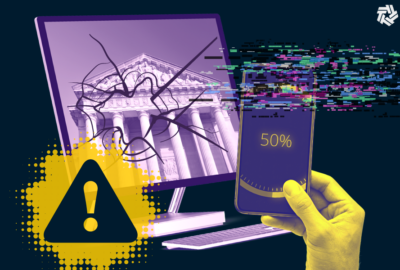

The directorate is being led by former USDS official Dana Chisnell. The goal is to support DHS's "high impact service providers" and other components.
The Department of Homeland Security is formally establishing its new “customer experience” directorate this month to help spearhead work across the department’s many components aimed at improving the public’s interactions with DHS.
The new CX directorate will sit underneath Chief Information Officer Eric Hysen’s office. “We’ve got some great talent already there and are building that out pretty aggressively,” Hysen said in an interview with Federal News Network.
The directorate will be led by former U.S. Digital Service official Dana Chisnell, who Hysen called “an absolute steal” for DHS. The establishment of the new headquarters office comes after DHS launched an ambitious CX hiring initiative last year. So far, DHS has hired approximately 25 individuals under that effort.
“What we’re finding as we bring on CX professionals through that hiring initiative and other efforts is that there is far more work to go around than we can support right now,” Hysen said. “So certainly looking at how we structure and specialize in different areas longer term.”
The focus on CX is not unique to DHS. Many agencies have been taking actions under a December 2021 executive order on “customer experience and service delivery.”
But DHS estimates that it interacts with the public more on a daily basis than any other federal department. DHS’ components include four “high impact service providers” in U.S. Citizenship and Immigration Services, Customs and Border Protection, the Federal Emergency Management Agency, and the Transportation Security Administration.
Hysen said he views the Department of Veterans Affairs as a “leader” in the CX space after it established a Veterans Experience Office in 2015. But as DHS establishes its own headquarters directorate, Hysen said a key distinction for the department is the many kinds of customers the department serves.
“[The VA] serves veterans, and it makes sense to have a large centralized customer experience shop, which they’ve done a great job of building out,” Hysen said. “We serve travelers, businesses, disaster survivors, immigrants, state and local law enforcement partners, so many other types of customers across DHS. So what we’re going to have at a department level will inherently look a little different.”
He said the focus is on establishing a directorate that can support and oversee the many different CX initiatives across DHS components.
“What we’re thinking about doing, and we’re still working through these plans with our agencies, is focusing on building a culture and capacity for improving customer experience across DHS, ensuring that each of our agencies are setting aggressive targets for improving their customer experience, and making sure that we are measuring that and reporting on it appropriately,” Hysen said.
Additionally, Hysen said the directorate can help address specific challenges that cut across components. He pointed to a recommendation from the Homeland Security Advisory Council to streamline and consolidate DHS’ various “trusted traveler” programs, such as TSA’s Pre-Check and CBP’s Global Entry.
“The TSA and CBP teams do great work there, but what we are finding is that we’re able to jump in at a department level, and help align each of their respective efforts towards the overall traveler journey and experience,” Hysen said.
“And so we are playing a more active role in something like that, which touches multiple DHS agencies than we are necessarily with FEMA, as they are transforming the experience of an individual disaster survivor applying for assistance,” he continued. “They’ve really got the lead and we’ll support them as they need, versus something like trusted traveler where we’re playing a more active role.”
The establishment of the CX directorate comes after DHS announced it met a goal to reduce the amount of time the public spends accessing its services by 20 million hours annually. That represents a major dent in the 190 million burden hours DHS estimated it imposed on the public at the start of the initiative last March.
DHS achieved the goal through multiple efforts, such as creating an online renewal form for programs like TSA’s Transportation Worker Identification Credential. The department also found ways to reuse information it already had, Hysen pointed out, like prepopulating certain forms used by Immigration and Customs Enforcement.
Hysen said different communities across DHS came together to embrace the “intent” of the decades-old Paperwork Reduction Act.
“Our employees in the IT, legal, regulatory, and other communities across DHS that implement it, all are doing so for the right reasons,” Hysen said. “Our goal is that this becomes an ongoing part of our work across the department. And that we, in addition to the target, set out a series of practices that we expect all parts of DHS to hit as they are developing new forms and applications.”
Meanwhile, DHS hasn’t set a new target for next year, but Hysen said he wants to see a further reduction in burden hours. And officials are also considering how to define other CX measures that aren’t as readily quantifiable as paperwork burden.
“We know that there are also a lot of things that aren’t quite measured quite so easily,” Hysen said. “The experience that you have going through a TSA checkpoint, whether you feel respected, calm, understanding of what’s happening, and why at each stage. How you feel when you’re going through complex application processes for things like disaster assistance, or immigration benefits. So we’re continuing to identify what are key services that we’re focused on improving and working with our agencies and offices on plans that will not only continue to reduce burden, but improve the customer experience in other ways and also strengthen our national security mission.”
Copyright © 2024 Federal News Network. All rights reserved. This website is not intended for users located within the European Economic Area.
Follow @jdoubledayWFED


